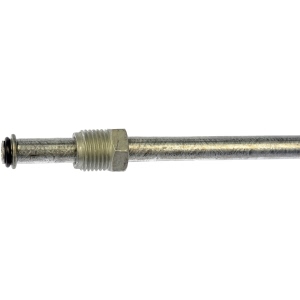< Back ×
2000 GMC Safari Fuel Line
My Vehicle Change Vehicle
2000 GMC Safari
< Back to View All
Fuel Systems
- Department
- Brands
- Prices

 $12.41Product Specifications
$12.41Product Specifications- Notes: Outlet; M16 x 1.50 Thread; 3/8" Tubing; Steel Line Gasket; Pkg Quantity: 1; Packaging Type: Bag;Inlet; M16 x 1.50 Thread; 3/8" Tubing; Steel Line Gasket; Pkg Quantity: 1; Packaging Type: Bag
- Fitting Attachment End 1: Male O-ring - M16-1.5
- Fitting Attachment End 2: None
- Fitting Size End 1: 16 mm
- Fitting Size End 2: 3/8''
- Fuel Line Connector Design: Male O-ring
- Gasket Material: Rubber
- Material: Steel
- UPC: 019495026112
- Part Description: 2000 GMC Safari Outlet Fuel Line Connector
Vehicle Fitment- 2000 GMC Safari | All Trims | All Engines
FAQ for Fuel Line Repair
Q: What's the recommended torque for the rear fuel line bracket bolt?
A:
The recommended torque is 6.0 N.m (53 lb in).
By Bob
GM Specialist
01/11/2022Q: What's the recommended torque for the fuel pipe retainer nuts?
A:
The recommended torque is 3.0 N.m (27 lb in).
By Bob
GM Specialist
01/11/2022Q: What's the recommended torque for the fuel pipe Crossrail retainer?
A:
The recommended torque is 11 N.m (97 lb in).
By Bob
GM Specialist
01/11/2022Q: Why should I apply a few drops of clean engine oil to the male pipe ends before connecting fuel pipe fittings?
A:
Because this will ensure proper reconnection and prevent a possible fuel leak reducing the risk of fire and personal injury.
By Bob
GM Specialist
01/11/2022Q: Can I use copper or aluminum tubing to replace steel tubing?
A:
No, you cannot. Only tubing meeting the 124-M specification or its equivalent is capable of meeting all pressure, corrosion, and vibration characteristics necessary to ensure the durability standard required.
By Bob
GM Specialist
01/11/2022Q: What's the proper way to remove the fuel hose/pipe assembly?
A:
The proper way is to disconnect the negative battery cable, remove the fuel filler cap, relieve the fuel system pressure, drain the fuel tank, then disconnect the fuel return, fuel feed, and EVAP line from the fuel tank lines, drain the gasoline from pipes into an approved container, finally remove the fuel tank and the fuel and EVAP lines.
By Bob
GM Specialist
01/11/2022Q: What should I do before connecting fuel pipe fittings?
A:
To reduce the risk of fire and personal injury, before connecting fuel pipe fittings, you should always apply a few drops of clean engine oil to the male pipe ends, which will ensure proper reconnection and prevent a possible fuel leak.
By Bob
GM Specialist
01/11/2022Q: What's the recommended torque for the fuel feed pipe fitting?
A:
The recommended torque is 27 N.m (20 lb-ft).
By Bob
GM Specialist
01/11/2022Q: How do you inspect for fuel leaks?
A:
You can turn ON the ignition for 2 seconds, turn OFF the ignition for 10 seconds, then turn ON the ignition, and inspect for fuel leaks.
By Bob
GM Specialist
01/11/2022See more FAQs (4)
